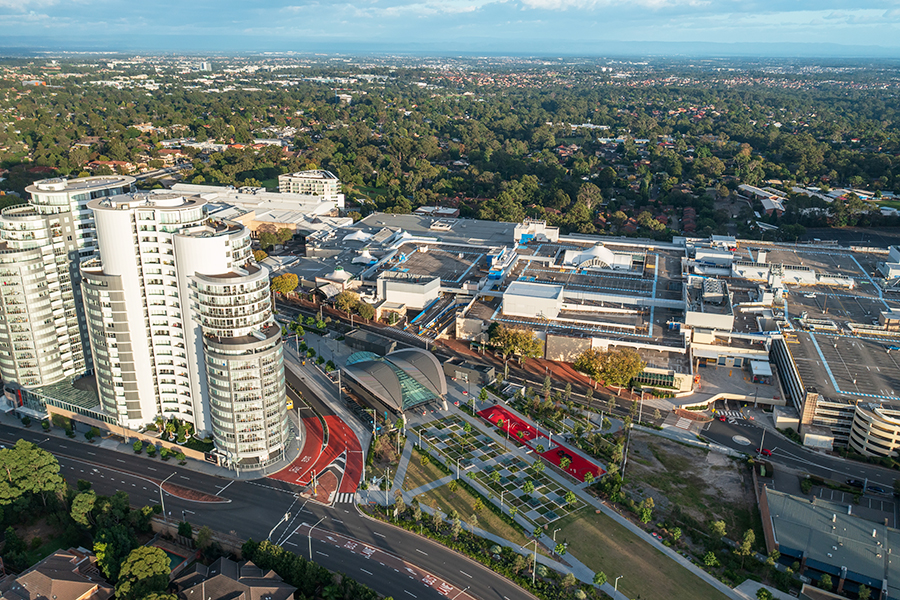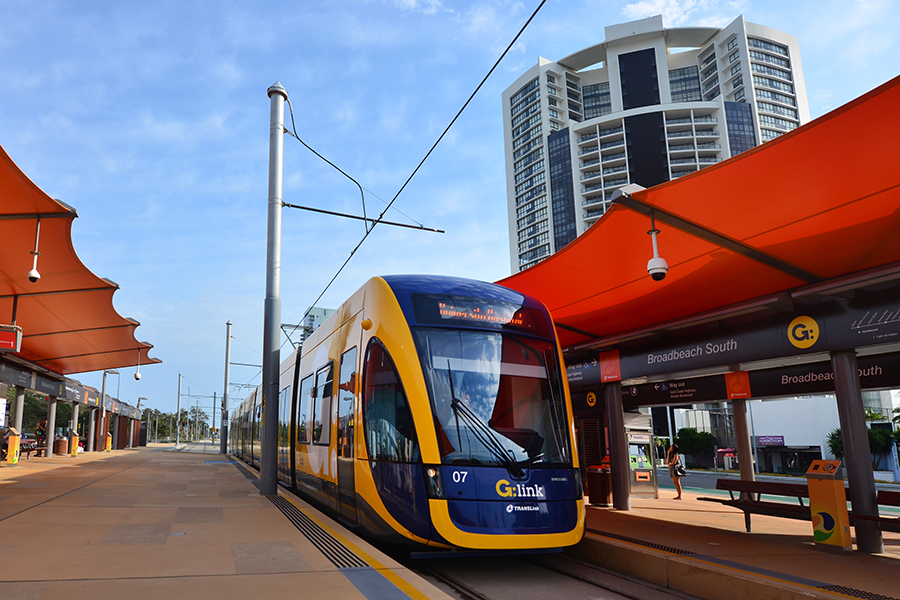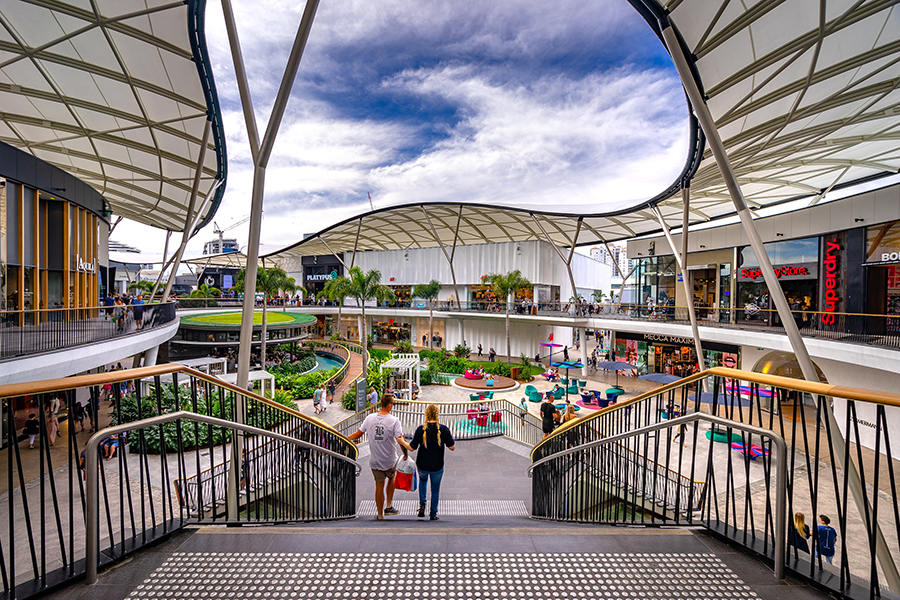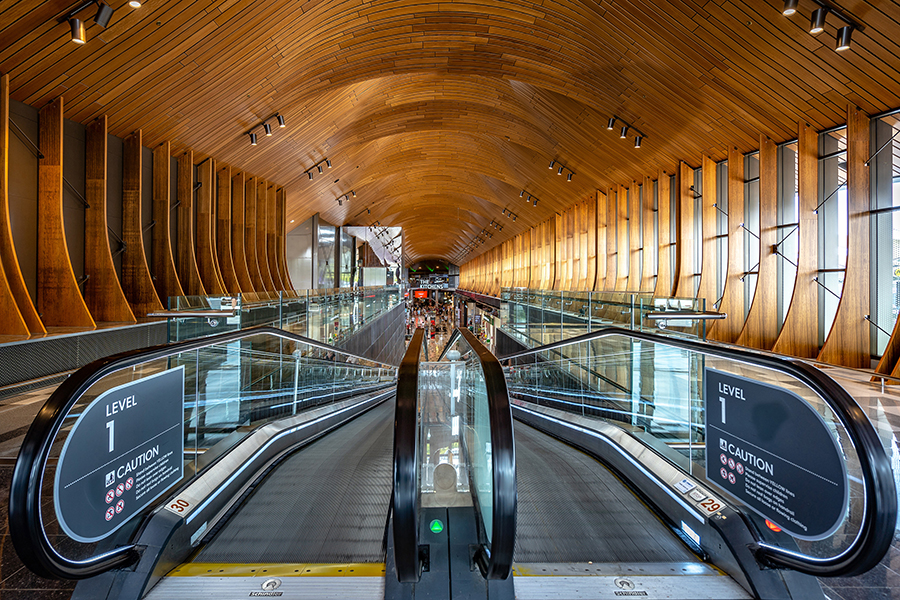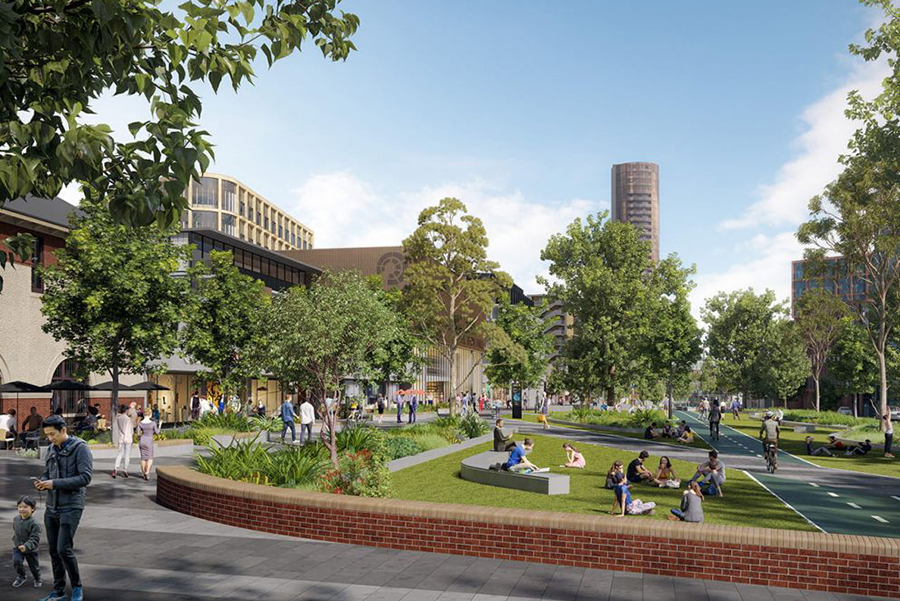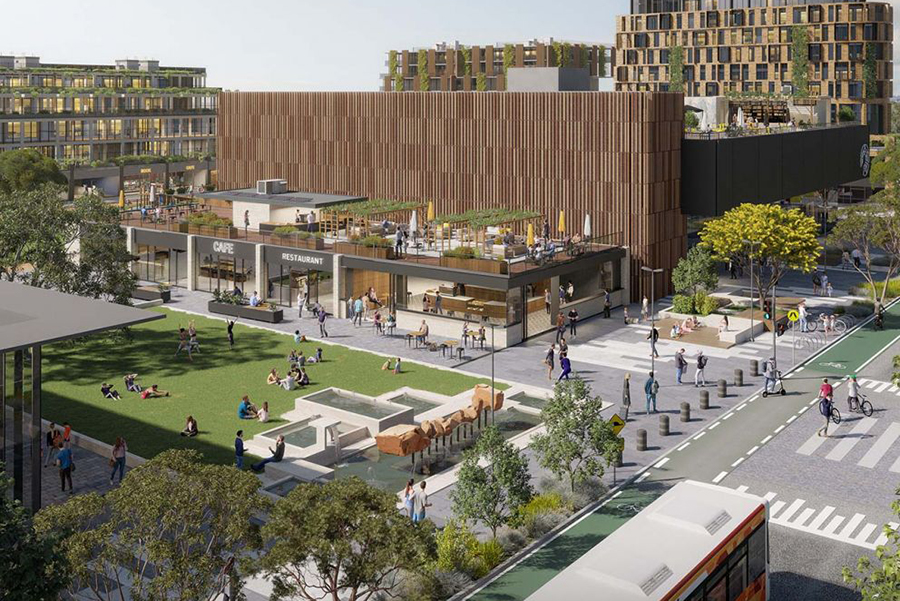Successful ‘Big Gun’ shopping centres offer so much more than simply what’s between their walls. They’re microcities, microcosms and mega retail spaces, with the chance to shape government decisions, shape cities and create communities of the future. Harold Perks and Chris Maher of Hames Sharley explain…
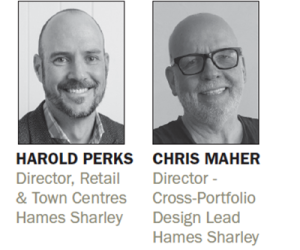
As construction costs and economic pressures continue to impact the retail industry today, our ‘Big Gun’ asset owners are thinking bigger, considering the wider local land context with moves beyond their precinct’s edges and surrounds. It’s not simply about ‘build it and they will come’ anymore, but instead harnessing key infrastructure, capitalising on location, re-evaluating and reengineering their footprints and securing new markets to bolster their reputation as a key destination for the next 50 years.
But how can ‘Big Guns’ influence precinct planning and what role does design play in piecing the jigsaw puzzle pieces together?
Leveraging key public transport infrastructure
Fifty years ago, roads, major arterials and freeways were built around big shopping centres, providing customers with convenient access and car parking. Today, they are built around public transport infrastructure. For good reason too – it works. Lakeside Joondalup Shopping Centre in Perth is now the third largest shopping centre in Western Australia, because of key planning decisions decades ago to build the Joondalup railway station adjacent to it. Other recent examples include the new Gold Coast Light Rail line near the Pacific Fair shopping precinct and the new rapid bus system near the Robina Town Centre.
- Gold Coast Light Rail near Pacific Fair
- Pacific Fair
- Robina Town Centre
Currently in Victoria, key critical infrastructure over the next ten to 15 years will change the face of its suburbs and offer opportunities for precinct shaping well into the future.
Of the six new railway stations as part of Victoria’s Suburban Rail Loop (SRL), four are already major activity centres with retail shopping centres.
For example, the recently refreshed Box Hill Central South Shopping Centre sits on top of Box Hill railway station, the first steps in a major ten-year vision for the area and earmarked for future development supported by transport easy access, similar to Sydney’s Parramatta precinct. Harnessing key infrastructure brings greater connectivity – and customers – to shopping centres, but it also informs a bigger picture that includes residential and other urban development typologies.
- Victoria’s Suburban Rail Loop (SRL) East station at Box Hill
- Victoria’s Suburban Rail Loop (SRL) East station at Monash
City shaping through housing diversification
Many governments are looking to ‘gentle density’ to ease the burden of urban sprawl and create more affordable housing close to established amenities. This includes new emerging housing typologies such as micro lot developments and co-living. Across the country, state and local governments are looking at how to integrate and encourage Medium Density Housing within 400 metres of town centres, and adjacent to public transport and rapid transport infrastructure.
In December, the NSW Government announced major planning reforms to respond to Sydney’s growing housing crisis too. It recently amended its State Environmental Planning Policy (Housing) 2021 to better accommodate a greater supply of more affordable, diverse housing options. This followed a plan to rezone eight areas for higher density residential within 1,200m of transport hubs: Bankstown, Bays West, Bella Vista, Crows Nest, Homebush, Hornsby, Kellyville and Macquarie Park, allowing thousands of new homes to be built. Another rezoning within 400m of a further 31 transport locations is planned to follow.
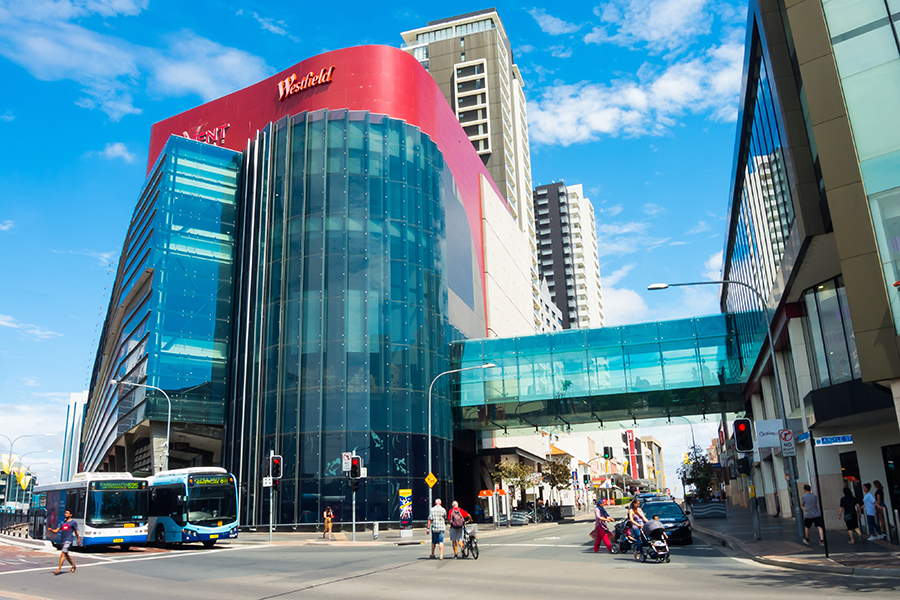
Parramatta Precinct
Policy movements like this offer a huge opportunity for Big Gun retailers – as housing supply increases in key inner-city areas, so does their market in terms of tourists staying local (ie. Air BnB via new investment properties) and the benefits of attracting nearby residents.
In addition to residential opportunities, Big Gun retailers provide great location opportunities for employment hubs. This could be commercial leasing that extends to office space, training spaces for trades, or education partners that may or may not have synergy with the retail core.
These examples can all add to a diversity of occupants and adds to the general footfall generation within Big Guns.
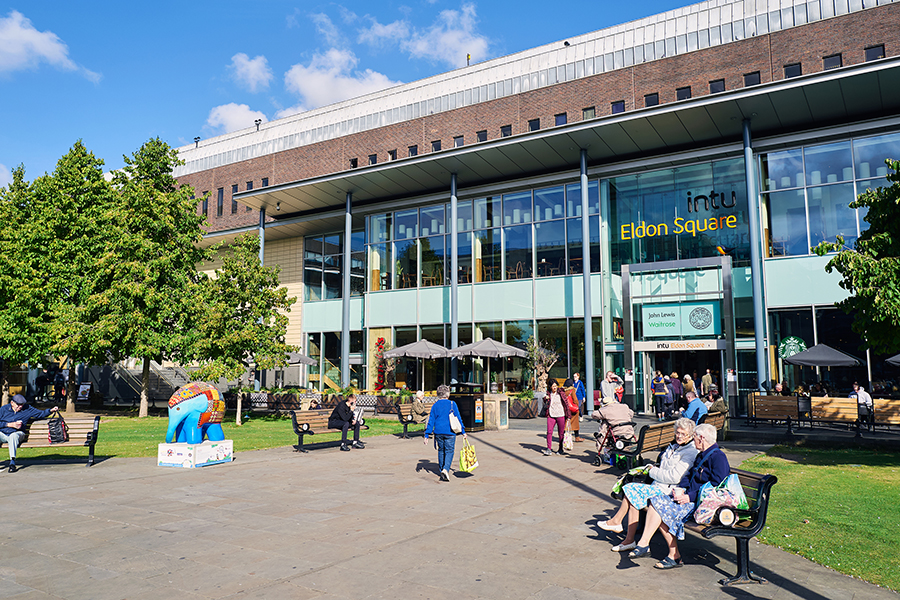
Eldon Square, Newcastle UK
Building on public community infrastructure
Viable land around ‘Big Gun’ precincts is also being used for additional public infrastructure, such as key community and cultural buildings. Where once public service buildings occupied standalone sites, they are now theatres, aquatic centres or day procedure practices adjacent or integrated into the footprint of large shopping centres. For example, the Eldon Square redevelopment in Newcastle, UK includes a top-floor department store reworked into a live music and theatre venue, complete with a microbrewery. Not only do these add foot traffic night and day, but also longer-term cultural benefits fostering greater authenticity to the overall experience. The opportunity is to work with local developers or local and state governments to design linkages and connect surrounding land use with theirs, which could also include typologies like new universities, commercial offices or public spaces, elevating the experience for all stakeholders across both precincts.
Closer to home in Canberra, the Dairy Road precinct is an urban adaptive re-use site that sets a new precedent with a brewery, child play facility, nightclub and even a learn-to-ski centre onsite, from a collection of old warehouses and contemporary architectural additions.
In the future, operators may re-evaluate their footprint due to major public transport changes, which opens up adaptive re-use options, such as shifting car parking into housing. As designers, our role is to bring an interdisciplinary approach unified by a single vision – creating a destination that offers a commodified experience.
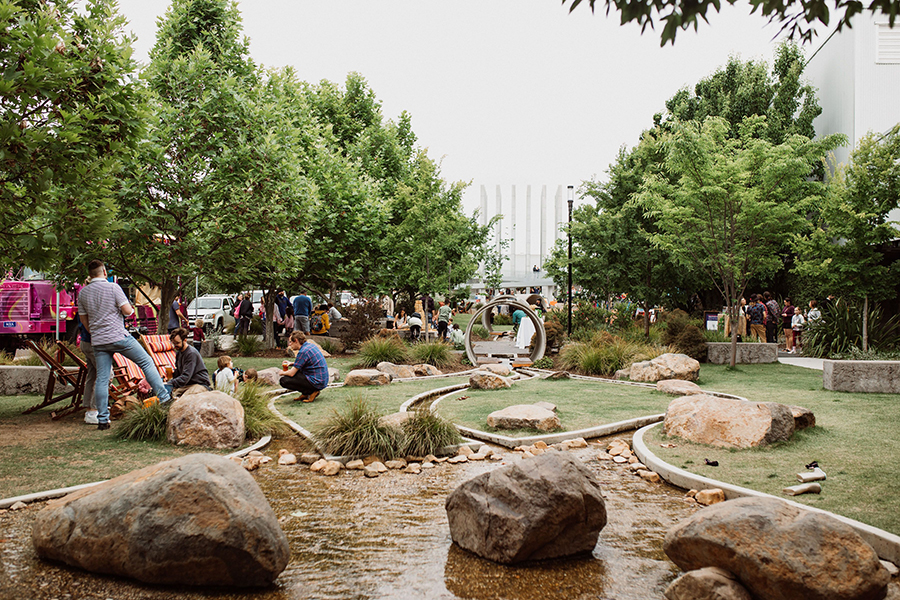
Dairy Road, Canberra
Leveraging the local context and land use
No two places are ever the same. But there-in lies the opportunity.
All places have their own unique DNA that comprises its physical environment and the intangible value people place on it. While the physical will stay the same without intervention, it’s value can change without warning.
That’s where adaptive re-use within the precinct boundary, as well as considering its surrounding land use to leverage of every location, can ensure the value of a place continues to evolve and remains high.
But as inflation and construction costs challenge any thoughts of development, now is the time to consider what this could look like so our Big Gun centres can move quickly when things change for the better. Large scale cultural projects, residential initiatives to create infill solutions and other major peripheral land use changes are often planned well into the future and could be used as a catalyst for retail reinvention. Using an interdisciplinary approach across all scales – from the tenancy, to the street and beyond – could unlock sustainable outcomes and allow our Big Gun centres to move rapidly and boldly when the conditions are right.
This article is published in the latest edition of SCN magazine. Subscribers can view the full digital edition here.


